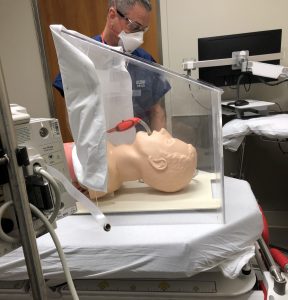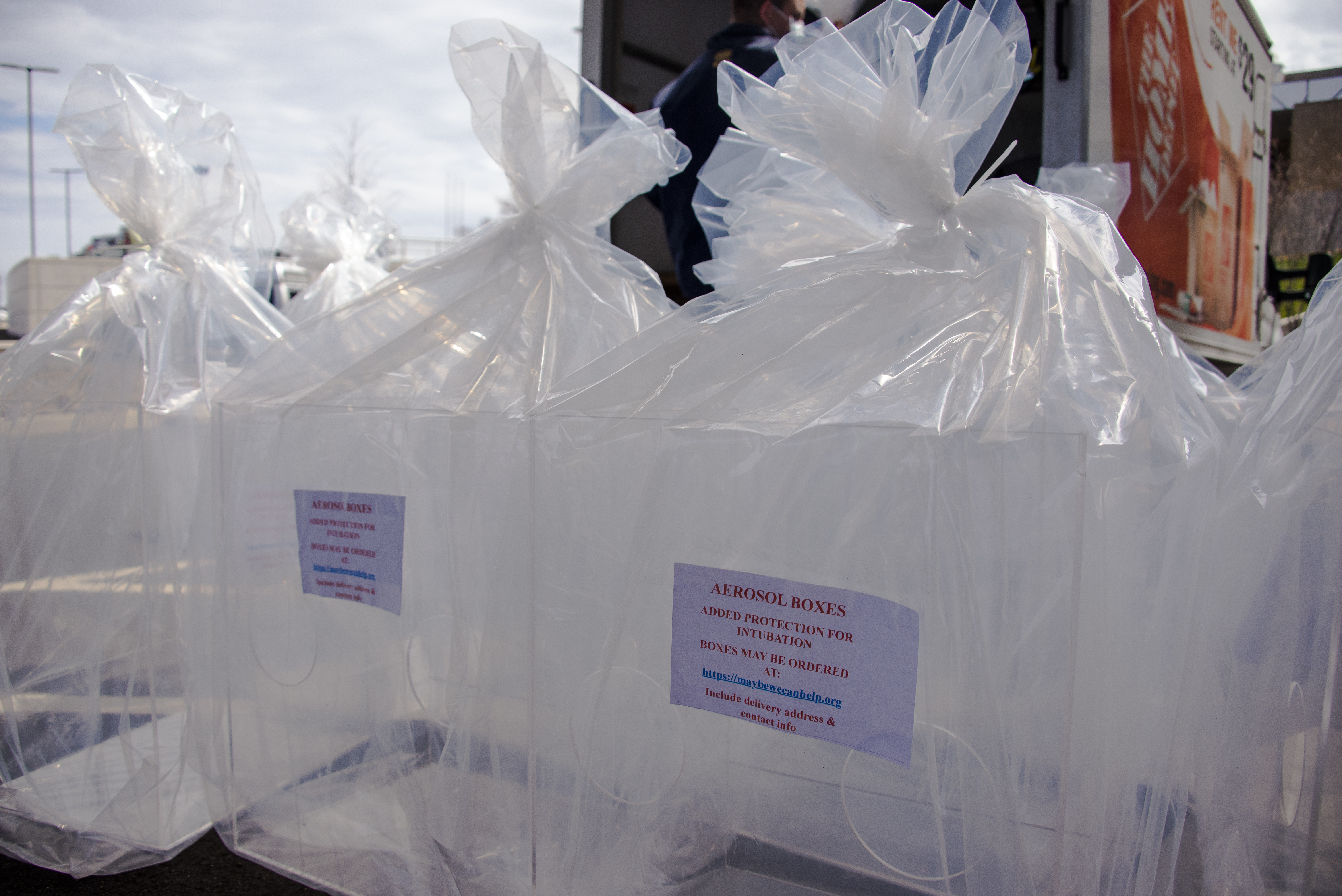A common complication of COVID-19 is acute hypoxemic respiratory insufficiency or failure, requiring oxygen and ventilation therapies such as intubation.
Intubation is a procedure that’s used when a patient cannot breathe on their own. A tube is inserted into the windpipe to make it easier to get air into and out of the lungs via a ventilator.
When patients are intubated in the Emergency Department (ED), the procedure takes place in an airborne isolation room. Intubation is an aerosol-generating procedure, putting the health care workers in the room in danger of exposure to the virus.
Those patients coming into the ED at UConn Health with COVID-19 or who are suspected to be infected tend to be very sick upon arrival, causing a spike in intubations in the ED.
To minimize staff exposure to COVID-19, Chief of the Emergency Department Dr. Rob Fuller and ED Dr. Paul Kaloudis have improvised by devising a protective barrier enclosure.
The pair, created what’s called an intubation hood together in Kaloudis’ workshop. The box, made out of Plexiglas, works by sitting over the head and shoulders of the patient as they are intubated. The transparent plastic cube is designed to cover the patient’s head, and incorporates two circular ports for the clinician to perform the airway procedure.

Different than others on the market, Fuller and Kaloudis created their box with a beveled top that allows more room at the head and a better view of the patient. The angled top glass makes for less glare and more freedom of movement over the airway.
The chest side of the intubation hood is designed to have a standard pillowcase taped as a drape. They decided to go with a pillowcase rather than plastic strips, making it easier to clean and be moved to allow the respiratory therapist or nurse to reach in and assist and still be protected. After the tube is in place and the patient is hooked up to the ventilator, then it’s a closed circuit and the lungs can’t push anything out anymore. The intubation hood is removed and cleaned, a new pillowcase is attached, and health care workers can go into regular care with the dangerous moment passed.
“One of the troubles they have run into is that the intubation hood doesn’t work properly for a very heavy person or one with big shoulders,” says Fuller, leading the two back to the drawing table to design a box that would accommodate those patients.
KVC Builders of Waltham, Mass., a custom home and cabinet company that is currently shut down for business, began making similar boxes when they heard there was a need in the medical community.
“Everybody just wants to do something,” said Ken Vona, owner of KVC Builders.
When Dr. Scott Allen, Chief Medical Officer and Quality Officer, heard that KVC Builders were providing these to hospitals he quickly connected the appropriate team members. Last week, KVC Builders donated a few units to the Department of Anesthesiology at UConn Health, and distributed over 30 more to other hospitals in Connecticut.
While the intubation boxes are not designed to replace N95 surgical masks or other personal protection equipment, it distances providers from the patient and minimizes the potential for droplet spread.
The boxes provided by KVC are currently being used by anesthesiologists and certified nurse anesthesiologists (CRNAs) during induction and intubation of COVID and COVID-suspected patients.
“We are sincerely grateful for the offers of help from members of the community reaching out to all health care workers in this time of unprecedented need. Everyone is doing their part, and we are humbled by their generosity,” says Department of Anesthesiology Chief Dr. Thomas Yasuda.



